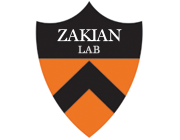Novel phosphorylation sites in the S. cerevisiae Cdc13 protein reveal new targets for telomere length regulation.
Publication Year
2013
Type
Journal Article
Abstract
The S. cerevisiae Cdc13 is a multifunctional protein with key roles in regulation of telomerase, telomere end protection, and conventional telomere replication, all of which are cell cycle-regulated processes. Given that phosphorylation is a key mechanism for regulating protein function, we identified sites of phosphorylation using nano liquid chromatography-tandem mass spectrometry (nanoLC-MS/MS). We also determined phosphorylation abundance on both wild type (WT) and a telomerase deficient form of Cdc13, encoded by the cdc13-2 allele, in both G1 phase cells, when telomerase is not active, and G2/M phase cells, when it is. We identified 21 sites of in vivo phosphorylation, of which only five had been reported previously. In contrast, phosphorylation of two in vitro targets of the ATM-like Tel1 kinase, S249 and S255, was not detected. This result helps resolve conflicting data on the importance of phosphorylation of these residues in telomerase recruitment. Multiple residues showed differences in their cell cycle pattern of modification. For example, phosphorylation of S314 was significantly higher in the G2/M compared to the G1 phase and in WT versus mutant Cdc13, and a S314D mutation negatively affected telomere length. Our findings provide new targets in a key telomerase regulatory protein for modulation of telomere dynamics.
Keywords
Journal
J Proteome Res
Volume
12
Issue
1
Pages
316-27
Date Published
01/2013
ISSN Number
1535-3907
Alternate Journal
J. Proteome Res.
PMID
23181431

